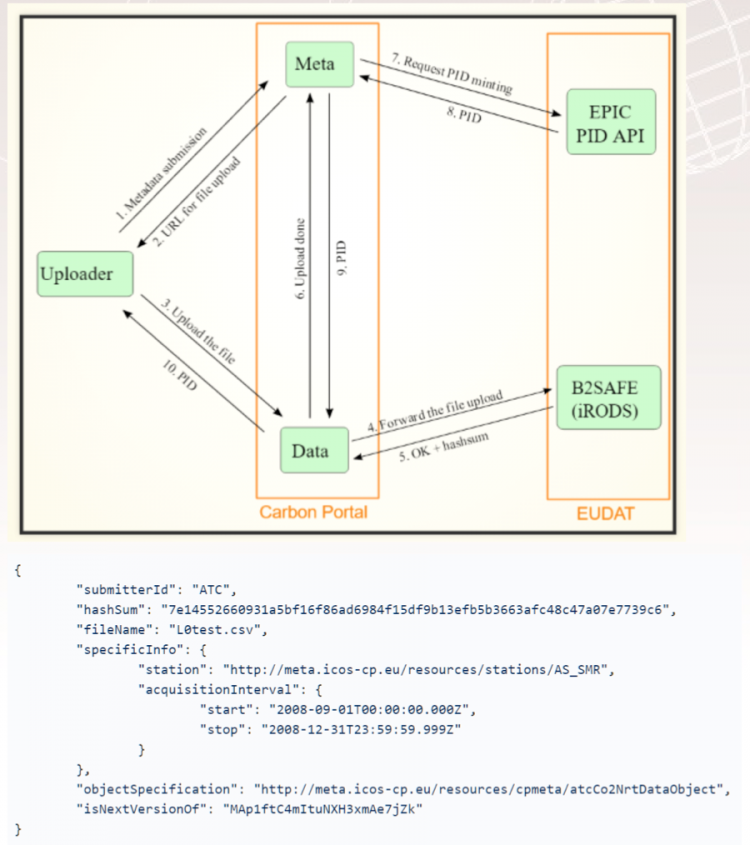(diff) ← Older revision | Latest revision (diff) | Newer revision → (diff)
The attributes marked with a * are confidential and should not be disclosed outside the service provider.
| Service overview |
|
| Service name |
Linked open data ingestion and metadata service
|
| Service area |
data
|
| Service phase |
|
| Service description |
|
| Customer group |
- RI data service operators,
- data application developers,
- e-Infrastructure operators.
|
| User group |
|
| Value |
|
| Tagline |
|
| Features |
- Machine to machine ingestion of data objects based on simple metadata profile
- Minting of ePIC PIDs, DOIs
- Streaming to trusted repository (iRods, B2SAFE)
- Creates dynamic landing pages based on ontology
|
| Service options |
TRL 7,operational in ICOS Carbon Portal
| Option |
Name |
Description |
Attributes |
|
| 1 |
|
|
|
|
| 2 |
|
|
|
|
| 3 |
|
|
|
|
|
| Access policies |
|
| Service management information |
|
| Service owner * |
ICOS
|
| Contact (internal) * |
Oleg Mirzov (oleg.mirzov@nateko.lu.se), Jonathan Thiry
|
| Contact (public) |
|
| Request workflow * |

|
| Service request list |
|
| Terms of use |
|
| SLA(s) |
|
| Other agreements |
|
| Support unit |
- email support,
- open for implementation at other portals
|
| User manual |
online accessible documentation https://github.com/ICOS-Carbon-Portal/meta
|
| Service architecture |
|
| Service components |
| # |
Type |
Name |
Description |
TRL [1]
|
| 1 |
|
|
|
|
| 2 |
|
|
|
|
|
| Finances & resources |
|
| Payment model(s) |
|
| Pricing |
|
| Cost * |
|
| Revenue stream(s) * |
|
| Action required |
|
[1] Technology Readiness Levels (TRL) are a method of estimating technology maturity of components during the acquisition process. For non-technical components, you can specify “n/a”. For technical components, you can select them based on the following definition from the EC:
- TRL 1 – basic principles observed
- TRL 2 – technology concept formulated
- TRL 3 – experimental proof of concept
- TRL 4 – technology validated in lab
- TRL 5 – technology validated in relevant environment (industrially relevant environment in the case of key enabling technologies)
- TRL 6 – technology demonstrated in relevant environment (industrially relevant environment in the case of key enabling technologies)
- TRL 7 – system prototype demonstration in operational environment
- TRL 8 – system complete and qualified
- TRL 9 – actual system proven in operational environment (competitive manufacturing in the case of key enabling technologies)
